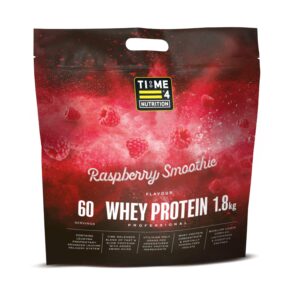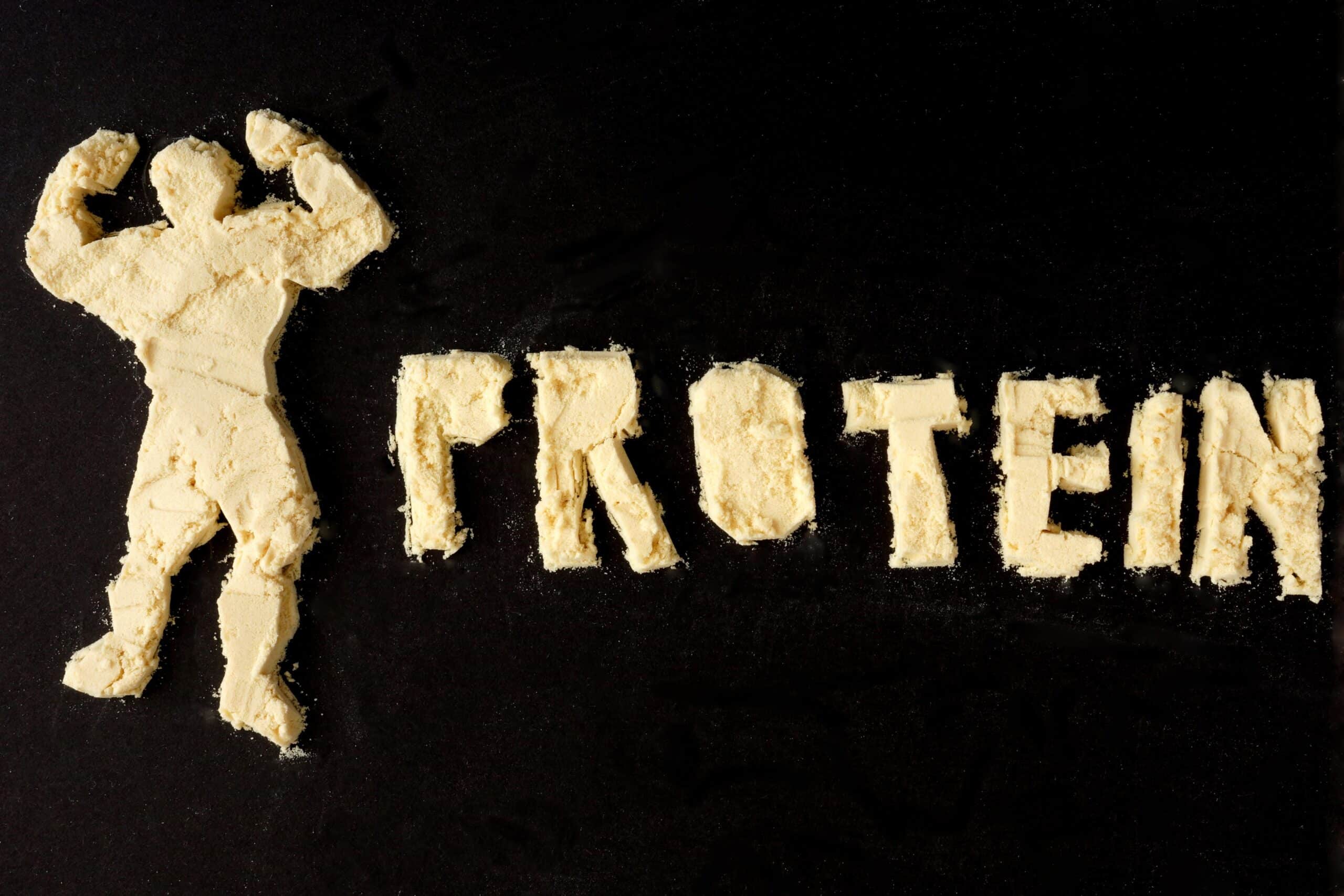What is the Best Whey Protein Blend? A New Milestone in Protein Supplementation
What is the Best Whey Protein Blend?
What is the Best Whey Protein Blend – A New Milestone in Protein Supplementation
By Brian Batcheldor BSC
Setting the Scene
As the long ranging impact of the pandemic on world food security and supply started to become apparent, many of us involved in sports nutrition started to question where it would all end, nothing could prepare us for the storm that lay ahead.
For obvious reasons, the self-help appeal of supplements during a period of such uncertainty and intense burgeoning strain on the health service meant that their popularity was going through the roof, -multivitamins, immune support products and vitamin C sales had literally never had it so good. From Echinacea and elderberry extract to vitamin D and zinc, -the list goes on and on, staff were working around the clock in factories just to get product on the shelves of stores that were now deemed to be providing essential services.
However, whilst the whole supplement industry was growing fat from the spoils of incompetence, paranoia and vulnerability, the reality on the ground for sports nutrition painted a totally different picture. For this industry, serious supply issues propelled by failed or cancelled harvests, energy and labour shortages, supply chain collapse, lengthy lockdowns in China, and major logistics challenges resulted in price hikes that even long-established brands would struggle to pass on or even survive, and customers may simply just not support. To compound matters, gyms, health clubs and sports facilities were all subject to extended closures and the sporting calendar was thrown into disarray, -this itself lead to a sharp drop in sales. Some would argue that this drop was short lived, due to the skyrocketing trend in fitness apps and the rise of the home gym and there’s a lot of merit in that argument. But to totally appreciate the impact of gym closures you need to understand the breakdown of sales by category and how this dictates how products are used and thus where they are likely to be sold.
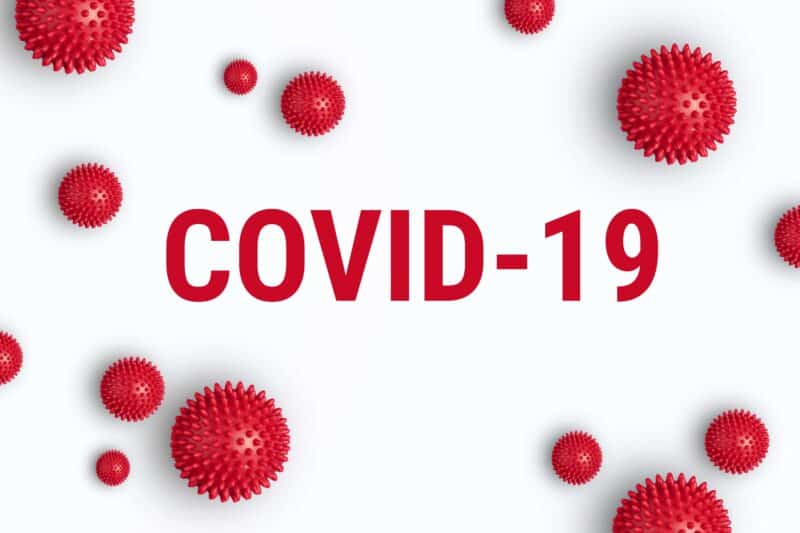
As we entered the Covid era, sports nutrition products accounted for over 42% of all supplement sales worldwide and around 44% of gym goers were using these products. With a global market of 14 billion US Dollars annually, you won’t be surprised to learn that pre-workout products were the fastest growing sector in 2020 (early covid), but you may be surprised that by 2022 it was post-workouts that held the biggest market share with 35%, although this gap was slim. I could go on about counter sales, fat burners, intra-workouts, etc, but I think you’ll clearly understand the point I’m making, -the industry was on the ascendancy and a huge percentage of these sales were linked directly to use in and around the gym. This is my contention with any argument for decreased gym sales being offset by a surge in fitness apps and home gyms or perhaps a growing mainstream availability of products like RTD’s and bars (supermarkets, garages, online stores, etc). Let us be totally clear on the specific damage we’re talking about and exactly what the actual data is describing when it refers to sports nutrition products; whilst the term “sports” nutrition is used, accountancy giants like PWR, leading marketing companies and business gurus alike have all been very clear on the point that in their post-covid sports nutrition market analysis they are essentially referring to bodybuilding products, i.e. the demand for sports nutrition products is largely driven by “recreational bodybuilders”, -the term used to cover any gym goer looking to build muscle size, burn fat or get stronger, ticking the box for every product category along the way, -pre, intra and post -workouts, protein powders, mass gainers, RTD’s, energy drinks and a whole host of specialist products in between. The specific nature of this market damage was:
- The afore-mentioned inherent production problems during this period.
- The reduced income amongst this demographic made many avoid nonessential spending which thus curtailed industry growth.
- The closure of gyms curbed gym retail sales/ training-specific supplement spending.
People using fitness apps to carry out bodyweight exercises were never going to feed the raging fire that was modern sports nutrition, -they would contribute to it and will help it spread going forward, as the app and home gym markets continue to grow and hybridize. But all of this was really about damage limitation, it started to become almost irrelevant as the main reason for the drop in sales still loomed large, -demand far outstripping supply.
Accounting for over 50% of supplement sales worldwide, protein supplements are a common denominator across the entire supplement industry, with the lions share (around two thirds) of those sales represented by sports nutrition. We see so much of the stuff that you could easily be forgiven for thinking that we have the glut, -not even close. Just consider the global infant formula market, its annual sales topped 50 billion USD coming into the pandemic, -nearly 10 times ours! Those figures are expected to double within only 5 years! Just the condensed whey market, the sweet stuff they use in bakeries and supermarkets, is almost equal to our market. I had no level of expectation about being close to the front of this queue. Admittedly the penny didn’t drop as fast as it should have, as we had long grown used to dairy companies playing hardball over prices and lead times whenever peak season came around, -there was always some hold up or shortage yarn being spun to us by the milk moguls. But this was different, -these were real shortages and with little in the way of answers. The worst hit ingredients were at opposite ends of the scale, -basic Whey Protein Concentrates (WPC) and high-quality isolates and hydrolysates (WPI and WPH) were in highest demand, reflected in prices that skyrocketed by up to 300%. But when covid restrictions hit hardest, milk prices went into freefall and dairies poured over a million litres of milk a day down the drain in the UK; the huge cheese market and an impending infant formula crisis then pushed casein and Milk Protein Concentrate (MPC) into the same drought as whey. Even if you could find material at any price, you now had to figure out how you were going to present it too, as this disaster was accompanied by endless shortages of packaging materials, -plastics, cardboard, glass, -all were being hoovered up by the pharmaceutical giants. If you were a sports nutrition company getting set to fill your customers orders at the busiest time of the year, then this was now truly looking like supplement Armageddon! Which ironically delivers me to the slightly less than perfect circumstances in which Time 4 Nutrition had decided to launch their improved premiere whey product, Time 4 Whey Protein Professional.
What is the Best Whey Protein Blend – Time 4 Whey Protein Professional

What is the Best Whey Protein Blend? – The Story So Far
Paul Smith and I meet up on a regular basis to review nutrition related research, innovation, and market trends, we’ve done this for a very long time. Whether it be bringing over a potential Olympia winner, organizing some edgy seminar or running a show, Paul has long supported the gym industry and enthusiastically sought to provide the answers that his customers could not get elsewhere, something he continues to do through Time 4 Nutrition. We’re perpetually at different stages of the development pathways for several products at any one time, but these meetings are not always about setting the world on fire with the next cutting-edge ingredient, they can often be about simple routine issues, like Brexit legislation, label legalities or taste testing. But rest assured, if the supporting science for an existing product is ever updated or starts to become open to debate, then a change is usually in the wind. In the months preceding the pandemic, it was the Time 4 cornerstone protein product, Time 4 Whey Protein, that was under review, and it was egg white protein (albumen) and peptide bonded glutamine (PBG) that were between the crosshairs.
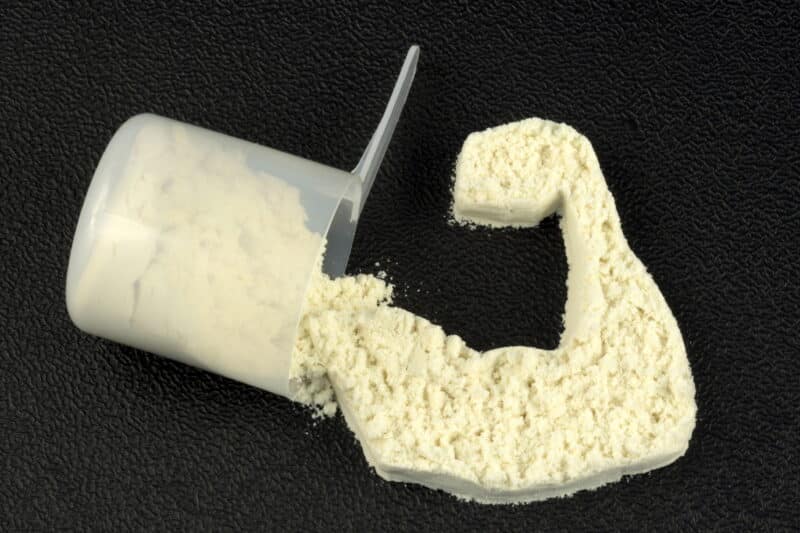
Having been part of a very small group involved in the adaptation of “fast” and “slow” protein science to sports nutrition back in the late nineties, I tend to pay far more attention than most to the evolution of protein supplementation, -the theme of this article. Initially in denial over the concept, many companies now sing its praises in their marketing, but still struggle to get to grips with the application twenty plus years on. So, before I move on to the details surrounding our reformulation, I think a quick recap on the science behind combining protein sources is in order. It was Professor Yves Boirie and his team that first showed us the light, -then based at the Centre for Human Nutrition Research, at Clermont Auvergne University, France. In his thought-provoking study on the subject, we would learn that there is a difference in how fast and slow proteins influence the net amount of protein retained from ingestion. His follow up paper confirmed that the digestion rate is indeed an independent regulating factor in how much is retained in the post-meal period (1, 2). Over a decade on, he was still nailing that cross to the door when, in a joint study, he confirmed that when whey and casein were consumed together, it was casein that demonstrated the more sustained anabolic effect with its slow elevation of amino acid concentrations that remained elevated above baseline after five hours (3). There are some key take home points from Boirie’s research, and we should not miss the main message:
- Boirie had no dog in the fight, -he wasn’t involved in sports nutrition, his field was the plight of the very young, malnourished, diseased and the aging, the challenge being to reverse the loss of muscle. That seminal study was sponsored by Nestle, -they sold whey, not casein, it probably didn’t open any doors for him, but it was straight science and that’s a rare commodity in sports nutrition.
- The digestion rate is an independent regulatory factor, whilst very important, it is not the regulatory factor, that would be protein quality. Boirie himself was keen to stress this point more than anything else when I interviewed him for the US version of FLEX magazine back in the early 2000’s. His studies used only native whey and micellar casein, -the products of skimmed milk production, the absolute gold standard. In fact, in that interview, Boirie would not go as far as to even indicate that he would expect similar anticatabolic properties from just regular calcium caseinate. Harsher processing techniques used in cheese manufacture (heat and pH adjustment) are known to cause denaturation and loss of bioactivity (4).
- Whilst casein use results in a prolonged anticatabolic effect over many hours, it’s whey that has the pronounced impact on protein synthesis, -more than double that of casein. This impact on synthesis is critical in the post-workout period. Milk is a blend of whey and casein, this balance shifts during stages of maturation, whey also becomes more beneficial as we age, when significantly impaired protein synthesis becomes a dominant driver of age-related muscle loss (5, 6, 7). The message is clear: for optimal and progressive results from supplementation, a combination of high-quality forms of both proteins (whey and casein) should form the base of any protein supplement.
What is the Best Whey Protein Blend – Time 4 Whey Protein Professional
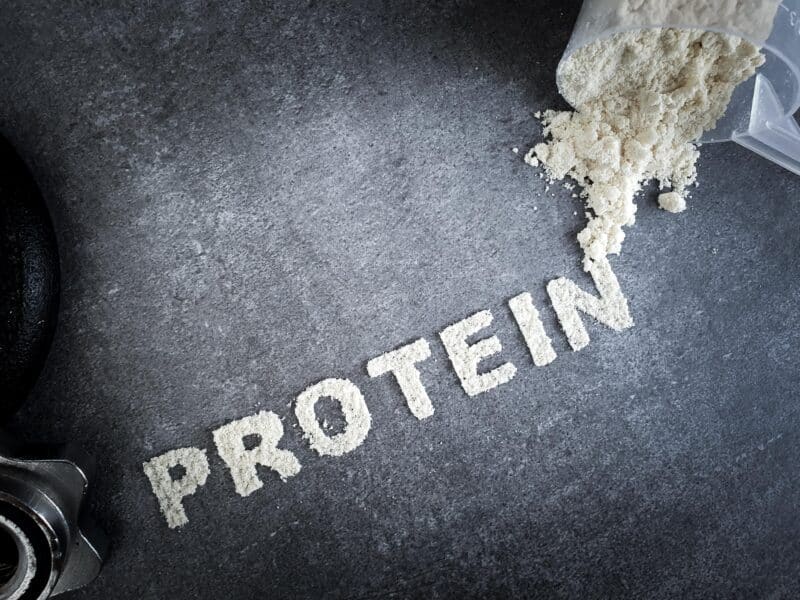
What is the Best Whey Protein Blend? – A Quick Rethink
Having established the above, those last two points bring me to why we feel that egg albumen and peptide-bonded glutamine (PBG) no longer have a place in Time 4 Whey Protein. First off, I want to clarify that egg white is a first-class protein and has always been included in any protein formula I developed since the adoption of a blended approach. It consistently rates high on all scoring systems (BV, NPU, PER and PDCAAS) and is certainly way superior to any of the plant goop or skimmed milk powder you will see padding out a lot of formulas on the market today. Compared head-to-head with casein in studies, it reduced oxidative stress by successfully increasing cardiac glutathione (GSH, -the master antioxidant), as well as mitochondrial antioxidants like superoxide dismutase (8). It’s an excellent source of bioactive peptides (antioxidant, anti-inflammatory, vasoactive, etc), enzymes and sulphur amino acids, -GSH precursors. Fast-forward to today, dairy production technology has caught up dramatically, -we can now do the same job better by using high quality whey hydrolysates, fractions (lactoferrin, alpha lactalbumin) and peptides (LeuSyn ®, Aminostable ®) to replace egg white and without the inherent allergen and taste issues. The milk proteins have the highest score on the PDCAAS rating system and contain the greatest density of leucine and EAAs, making high-quality whey and casein the more-rounded preferred sources of protein. Taking this into account, it made no sense to displace any whey or casein with something that causes neither the same prolonged elevation of aminos or rapid spike in MPS.

When it comes to wheat-based peptide bonded glutamine (aka glutamine peptides), the reasoning was a lot more straight forward and initially came about through reassessing our stance on the ideal ratio of fast to slow proteins. In honesty, I feel that I should have challenged the use of this ingredient in a blended protein supplement years ago. Like many, I got swept along with all the hype. Having the inside scoop, Weider Nutrition were about to release a new meal replacement off the back of Boirie’s findings back in 1997, the manufacturer “tipped me off” that he’d planned to add PBG. Wanting to be first to the punch, I just rolled with the science whist waiting for it to arrive, -I had no reason not to trust him at this point. The company I then worked for launched what was seen as a ground-breaking product at the time, the manufacturer went on to produce similar versions for two other US-based companies, PBG being a common denominator in all formulas. Ironically, Weider backed out because their product was considered “not cost effective” at that time, they were also concerned about the potential backlash from the customers at Weider Publishing, who filled the coffers via ad sales for whey-only protein products. I can attest to the validity of this concern, as there were serious threats of pulling ads after the FLEX articles about fast and slow proteins. The US version of FLEX had a science section that was thicker than the entire UK publication, the co-writers of these articles were some of the most respected in the industry; my good friend, the late Dr Jim Wright, Science Editor and author of some of the most up to date steroid literature back then, Jeff Feliciano, co-author of The Underground Steroid Handbook and a leading nutritional guru to elite sportsmen, including Muhammad Ali, and Jeff Everson, sports scientist, founder of Planet Muscle magazine and former husband to 7-time Miss Olympia, Cory Everson.
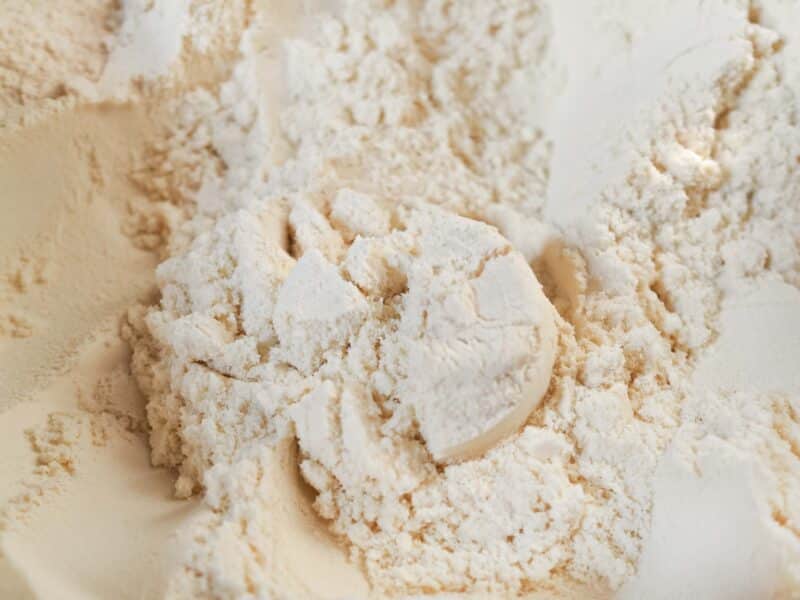
Apart from some sketchy references to ileal digestibility in animals, no supporting science for PBG came through. To be clear, -there are no proven advantages to using PBG over regular L-glutamine when it comes to replenishing the 80% of total glutamine reserves that are found in skeletal muscle. Sure, there are issues surrounding the transport of some aminos that allude to preferential uptake either as peptides or in their free form across the intestinal wall, and there are also many that found no advantage, but not for this amino acid, all found that regular L-glutamine is taken up just fine, -by muscle. There are a few studies that indicate PBG supplementation could aid GI tract recovery in those with non-allergenic erosive conditions like gastritis, but then it is our responsibility to consider the allergen issue, because that is what wheat-based products are to many, -allergens. GI distress is a responsible consideration in formulation; when referencing dietary protein, any significant nutritional science text will point out that all current scoring systems to evaluate protein quality are totally irrelevant if the issue of allergen content of a protein source is not taken into consideration (9). Time 4 Whey Protein Professional is our cornerstone product, -we are in the protein quality business.
So how did the initial interest in PBG come about? Professor Roger Harris, of Chichester University, drafted the seminal paper on creatine supplementation in 92, Paul and I supplied the athletes for that study. Later, Roger went on to investigate beta-alanine supplementation as an answer to the poor oral bioavailability of carnosine, in doing so, he had introduced the two best studied and most proven nutritional ingredients in sports nutrition. Earlier in his career, whilst involved in veterinary science, he had conducted studies involving glutamine to address its poor stability in solution, -the issue that fuelled the commercial interest in PBG. Roger confirmed to me that his team found no proven advantage of PBG over its free form alternative when not kept in solution for extended periods (RTD’s). The companies producing this material and making these misleading claims do not even seem convinced themselves, instead of trying to back them up, they have ceased all production of the initial higher percentage material (40% glutamic acid) and moved on to investigating the potential of gluten-free options for which they hold production patents, like soyabean meal.
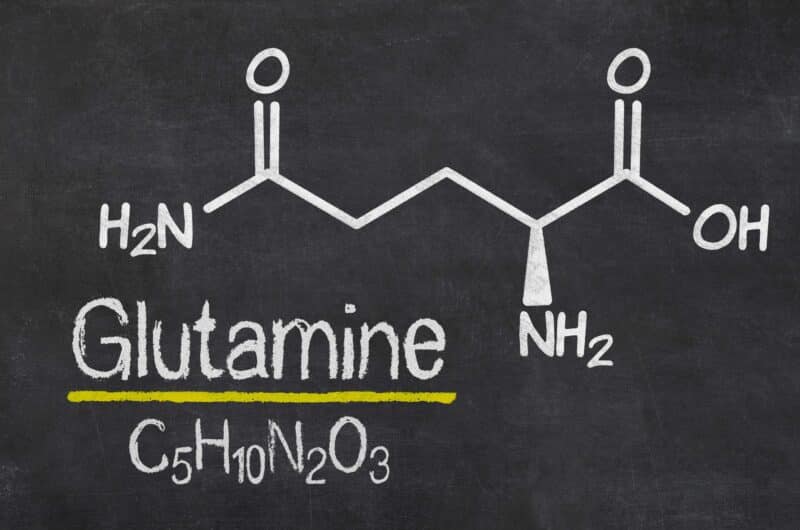
The momentum behind PBG in sports nutrition started when an article that appeared in Ironman magazine over 20 years ago claimed that dairy proteins were poor sources of glutamine and required the addition of PBG, as “it was ten times more bioavailable than regular L-glutamine”, to be “backed up” by a study from the journal Nature (2003, volume 12) that was about to go to print (apparently).
The problem was and still is that it is quite easy to take a swipe at the dairy proteins regarding their glutamine content, because of the testing methodology used for all foods when it comes to glutamine content. The data on amino acid content in foods is obtained primarily by ion-exchange chromatography following acid hydrolysis of material and, in more recent years, by measurement of protein-bound glutamine (the Kuhn method). The drawbacks of such biochemical measurements include the conversion of glutamine to glutamic acid. Therefore, the content of glutamine in food proteins is not available in nutrient databases and that of glutamic acid is probably overestimated anyway. Whey protein and casein contain around 15% and 17% glutamic acid respectively, the USDA have claimed around 8% glutamine for milk powders, and I have seen analysis of skimmed milk that found 1.23 grams per 100 ml using novel gene sequencing technology; I don’t think the 8% figure is going to be far off if taken from skimmed milk whey (native) (10). As for the Nature study referenced in Ironman, -it never actually existed, -at the time, Ironman was owned by a US company (Muscle-Link) that also owned one of the two US-based brands I referred to earlier. All the original formulas were similar, all contained PBG -literally because the manufacturer was sat on tonnes of cheap PBG. Added at around 20%, a 60+ gram shake (back then) would equate to 12 grams of poor-quality hydrolysed wheat protein. Of this, around 2.5 grams will be glutamic acid from which you will only get between 1-1.5 grams of glutamine, -why not simply just add more quality dairy ingredients? Wheat protein hydrolysate contains levels of denatured amino acids (lysinoalanine, lanthionine and D-amino acids), these are formed during alkaline/heat treatment. In animal studies, they are poorly digestible (less than 40%) and their presence can reduce the overall protein digestibility (of your protein shake) by up to 28%! In a high-quality dairy-based product that started out with so many pro-nutritional factors going for it (like the Time 4 premiere product), why go add a poor-quality protein with established anti-nutritional factors that could well cancel out these benefits? We will come to the subject of ideal balance between fast and slow proteins shortly, but the original blended concept is supposed to balance protein synthesis with prevention of catabolism, – as a hydrolysate, -PBG is a “fast” protein that is present at a high enough level for its inclusion to throw off any calculated balance in digestion rates achieved by the dairy solids. Ongoing regulation changes regarding labelling/identification of allergens has now seen PBG having to be (rightfully) listed as wheat on the labels of other protein products, it would look even worse if the amino acid profile had to be declared by them also.

Now that I’ve explained our position on PBG, does that mean that we will instead be putting L-glutamine in Time 4 Whey? No, and here’s why. Glutamine has established health promotional properties, particularly in relation to immune function and gastrointestinal health. I am the biggest advocate of glutamine supplementation I know, -I firmly believe that there is a place for targeted/cyclic use by athletes and those with special circumstances (IBS, diverticular disease, Colitis, etc), I endorse this practice to athletes that I advise. The key to glutamine supplementation is “targeted use”, and not high-dose indiscriminate use. I do not believe it should go in a protein supplement because such a product is intended for regular use and this may defeat the purpose, with some advocating/using dosages of around 40g/day, this could create issues further downstream. At these kinds of dosages, it could potentially impair the production of glutamine by the body long term, possibly increasing glutamic acid and ammonia production, -the result being impaired detoxification and questionable impact on immune function. Amongst other things, you could well see a decrease in levels of the BCAAs, -far from the intention of using a protein supplement. Glutamine also shares the same transporters as several other amino acids, -it may impair their tissue distribution and absorption in the gut and kidneys (11). We have worked hard on achieving the right balance in our protein supplement and we know that we are on the right track, quality dairy proteins that supply high amounts of leucine and EAAs are central to this, impacting their absorption or reducing the dosages to add glutamine would be a compromise. Research in this area (addition of glutamine) has already been done; one 10-week resistance training study by Kerksick and colleagues demonstrated that the combination of whey and casein yielded the greatest increase in fat-free mass (using DEXA) when compared to both a combination of 40g of whey, 5g of glutamine, and 3g of BCAAs and a placebo (48g of maltodextrin) (12).
Oral L-Glutamine use pre- and intra-workout can be a useful tool to mitigate exercise-induced stress on the GI tract and immune system, via its ability to influence gut permeability and increase heat shock protein expression (HSPs) in muscle (13). Increasing levels of HSPs, particularly HSP70, will improve recovery and target muscle breakdown pathways. This is a particularly useful ploy to women, as estrogen blunts the postexercise HSP70 expression in muscle that male athletes experience, -glutamine supplementation can reverse this and so the cyclic addition to protein powder can certainly be justified (14). In addressing our selection of materials for our current reformulation of Time 4 Whey Protein Professional, we came up with another unique way of harnessing the anticatabolic potential of HSP7O.
What is the Best Whey Protein Blend – Time 4 Whey Protein Professional

What is the Best Whey Protein Blend? – The Masterplan
Our primary intention moving forward was on shifting the ratio of fast to slow proteins, -we were leaning towards increasing the percentage of fast proteins, as the mounting evidence supporting higher protein intakes by athletes presented other practical considerations for the digestion rate, e.g., number of feedings and regularity to achieve target intake. On top of this, more recent research in this area indicated greater focus on increasing myofibrillar protein synthesis (MPS) across all demographics, -not just athletes, but in older individuals, the injured, perimenopause, etc. We also looked at how different protein sources can influence where and when this is happening, -i.e., not only in the post-workout period but also over the periods between training, -at rest, in a fed vs fasted state, pre-workout, -this is highly relevant. So much attention has been given to the post-workout scenario, but in truth, hard training can dramatically “sensitize” muscle to the uptake of amino acids in the hours that immediately follow, the body really does attempt to make the best of a bad situation, so much so that even some low-quality proteins can partially increase MPS to a degree. Of course, this is not optimal, and it can really skew the research, but it is how we got here as a species. Whey protein is such a strong driver of MPS, not only in the post-workout period, but also at rest, -it is that last point where whey surges ahead of every other protein source by a huge margin, – when we compare it with other protein sources during this period, i.e., at rest (15). Looking deeper into what goes on with MPS around the clock, animal studies have compared different protein sources by using leucine content as the criteria; wheat (supplemented with leucine), soy, egg, and whey, (containing 6.8, 8.0, 8.8, and 11% leucine, respectively), all based on three feedings per day. Wheat and soy did not even stimulate MPS above fasted levels (another reason to drop PBG), whereas egg and whey proteins significantly increased MPS rates, with MPS for whey protein being greater than egg protein. Think about this when you see a blended product that contains multiple protein sources, because it highlights the importance of prioritizing ingredients that promote elevated and sustained MPS between workouts for long-term gains in muscle. Based on the available science, it became obvious that we needed to give this much greater consideration when re-assessing the ratio; the whey content in our formula had to be increased.
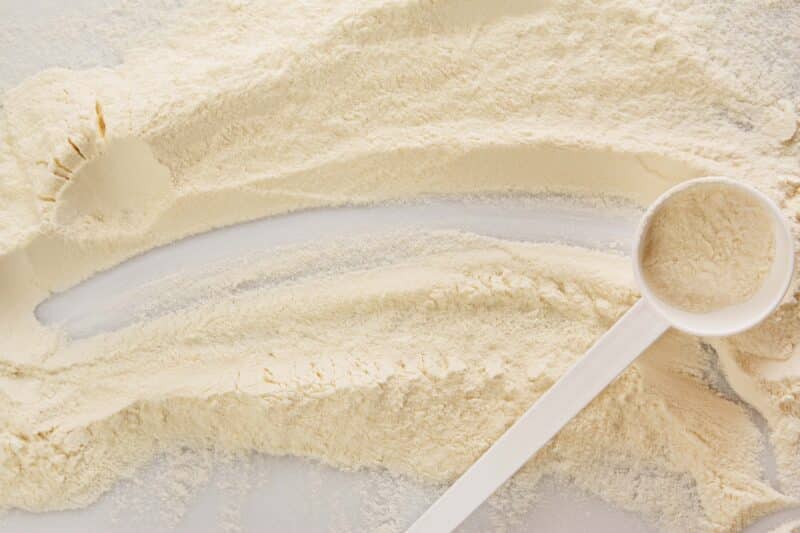
Had myself and others perhaps missed something in those original studies when it came to the priority? At that time, Boirie was looking at whole body (non-muscle) protein balance, as opposed to skeletal (myofibrillar) MPS. The calculations were in splanchnic extraction of amino acids -those taken up by the abdominal organs, -the intestines, spleen pancreas, liver, etc. Because skeletal muscle turnover occurs at a much slower rate than plasma and splanchnic tissue, it could contribute anywhere from 25 to 50% to the overall figure (24). This is what we understand more today than when that landmark Boirie study went to print, -the importance of muscle to whole body protein synthesis. The degree to which the two (splanchnic vs MPS) are dependent on each other can also vary with the circumstances (trained vs untrained, fed vs fasted, insulin sensitivity, etc) and the source of protein. The differences in digestion rate between sources (fast vs slow) and subsequent impact on muscle protein metabolism can also extend way beyond the degree of hydrolysis (breakdown and release of amino acids) and/or their amino acid profiles (18, 19, 20, 21, 22, 23,). For example, unlike soy and other plant proteins, more of the EAAs from whey survive splanchnic uptake and travel to the periphery to achieve a combined higher spike in MPS and net muscle protein accretion in direct comparison to all other protein choices (25). It turns out that we hadn’t missed a thing, -in recent years, another study that Boirie was involved in established that splanchnic protein metabolism is modified by age, but this does not result in decreased MPS when high levels plasma levels of EAAs are maintained (26). With whey and casein having the highest density of EAA, we were still on track with our reformulation. In fact, several of his studies over the years have identified the key role of leucine in protein balance, once again, the dairy proteins have proven to be the richest sources). It’s worth noting that even today, Yves Boirie and colleagues continue to contribute some of the most exciting research in this area, with newer high-tech studies, examining more scenarios and even using athletes (yes, including bodybuilders!), research still confirms the precise role of each dairy protein in a formula.
We now needed to take all the above into consideration before settling on our ratio:
- Native (undenatured) whey protein is still the fast protein of choice, with a 40+ gram serving skyrocketing MPS to its maximum of a whopping 300% in as fast as 45 minutes (27). We needed to stagger this effect using high quality hydrolysate isolate and concentrate blended with micellar casein.
- MPS drops off substantially at around the 90 minutes mark at the above dosage before returning to basal levels, high quality micellar casein would still be needed in our blend to “pick up the slack” over the following hours.
- Leucine drives MPS in a dose-dependent manner, research indicates the importance in striving to attain 700-3000 mg of leucine in a protein supplement to achieve a rapid influx of an impactful uptake. However, a ceiling of 3.5 grams has been identified 60 minutes after exercise, -this is where we needed to be and undenatured dairy sources are still the richest sources, with whey and casein at 11% and 9.3% respectively.
- Increasing leucine concentration will stimulate increases in muscle protein, but EAAs are the substrate and a higher total dose of these (as free form amino acids or intact protein sources) is the best way to sustain these increased rates of MPS. Quality dairy solids would ensure this demand is met, with over 50% of the amino acids in our undenatured whey and casein being EAAs.
- The issue of using undenatured proteins remains central to the benefits of this formula, as I pointed out when covering splanchnic extraction, these benefits extend way beyond mere amino acid profile. Combining whey and casein isn’t just the ideal way to address muscle repair and function, these proteins contain an array of biologically active peptides whose amino acids sequences give them specific signalling effects when liberated in the gut. Only native whey is high in the fractions Beta-Lactoglobulin and alpha-lactalbumin; the former contains the absolute best source of peptide-bound leucine and the latter being rich in stressbusting, sleep-boosting tryptophan. Using this material would preserve the immuno-supportive properties that we have highlighted so heavily over the years. The addition of lactoferrin to bolster naturally occurring levels will further enhance the antibacterial, antiviral and antioxidant properties of this fraction, which also improves iron absorption and retention (28, 29, 30).
- Reducing GI distress is an important consideration, whilst protein quality will help, higher protein intakes still represent a challenge to many. Adding digestive enzymes is a step in the right direction, as there is some legitimate science that exists behind their use. Digestive enzymes have been shown to minimize quality differences between varying protein sources, not an issue to be concerned with if there are no poor-quality proteins in your blend, but it demonstrates bioactivity. Where enzymes are of particular use is opening the possibility for anyone to use a clean, science -based, high quality protein supplement like ours without having to worry about GI distress. I must admit though, putting my mad scientist hat back on, the idea of enzymes potentially creating shorter peptide chains to “slot in” behind the added free form aminos and create a more continual early spike in protein synthesis was appealing. Amazingly, we’re still in the early days of research when it comes to definitive conclusions, but there’s a couple of branded products out there with human clinicals behind them making bold claims, like rapid breakdown of large peptides associated with stomach discomfort, decreased C-reactive protein and increases of over 20% in plasma amino acids when added to whey. Adding one is a no brainer (31).
The original formula that was launched by this research went with a ratio of 60: 40 whey to casein, -the same as the later stages of human maternal milk. At the time, I did not feel this calculation was far off with its assumptions, -we all knew that a large bolus of such a blend would require more emphasis on the side of faster digestion, as consuming a large serving of a casein-heavy formula more than once a day could leave you feeling like you’re in perpetual state of breaking down your last meal. Micellar casein is water insoluble, -it clogs in the gut and this, along with its opioid peptides, effectively slows gastric motility right down. As I mentioned previously, increasing protein intake over more feedings would require change; looking at the different amino acid kinetics, with everything we now know, we felt 70: 30 to be a more appropriate ratio today.
What is the Best Whey Protein Blend – Time 4 Whey Protein Professional
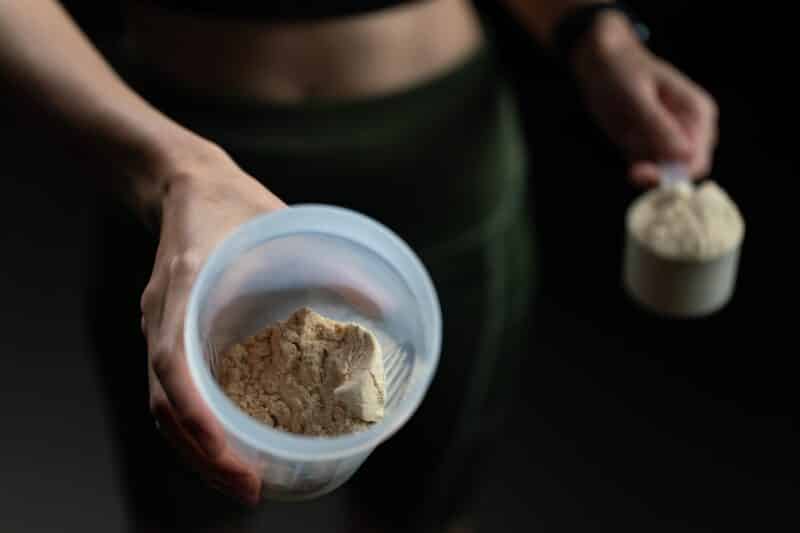
Into the Storm
Of course, for us, this selection of materials couldn’t have come at a worse time, -any dairy ingredients were relegated to the realm of wishful thinking at the peak of the covid crisis, let alone accessing the industry’s premiere ingredients. Finding these materials became like the labours of Hercules, with the company being forced to step outside of anything that remotely resembled a comfort zone and take bold steps to secure materials that other companies wouldn’t even be considering in such unpredictable circumstances. The PLCs of sports nutrition were in a race to tie up all existing supplies of sensibly priced cheese whey. The battle for their R & D Departments was sourcing sustainable packaging, -finding something green to wrap the next version of beige. Meanwhile, whilst other companies were making ends meet by adding cheap ingredients from the bakery industry, like skimmed milk powder and sweet whey (check your labels), Time 4 was receiving samples of materials that have still yet to enter the industry, making long-term commitments directly with producers of some of the most cutting-edge dairy ingredients available, several of which will surface in various categories over the next few months.

You don’t have to be a rocket scientist to calculate from what I’ve already stated about the ratios that the major percentage of our product is whey, coming as a blend of native skimmed milk WPC and partially hydrolysed WPI. The casein side of the equation is supplied as Milk Protein Concentrate, which itself obviously mirrors the ratio of cow’s milk; 80: 20, casein to whey. Nothing earth shattering here, just clean, low processed, highly bioactive materials from skimmed milk production provided by free ranging grass-fed animals. I have written extensively over the years about protein milk protein fractions, their properties and the impact of denaturation on them and ill revisit this with an updated assessment of the subject. However, my intention in this synopsis is to highlight the inclusion of that unique WPI and why we added it. I referred to this earlier when covering L-glutamine and its impact on HSP70, a heat shock protein with multiple diverse functions. In skeletal muscle, it is rapidly induced in response to stressors of varying magnitude, from exercise to full blown muscle trauma, with upregulation facilitating muscle regeneration and recovery. Conversely, downregulation occurs during inactivity and aging, with evidence indicating the loss of HSP70 as a key driver of muscle atrophy, contractile disfunction and diminished regenerative capacity associated with these conditions. When it comes to nutraceuticals, using whey protein hydrolysate is an intervention that can enhance the exercise induced HSP70 response (32). With material having already demonstrated these properties, partially hydrolysed WPI has been included in our formula to enhance the anticatabolic properties to an even greater degree. Identified over 20 years ago, the enzyme MuRF1 is a major player in the atrophy of skeletal and cardiac muscle during catabolic states and is regarded as a prime target for pharmacological treatments against muscle wasting; HSP70 overexpression inhibits the promoter activity of MuRF1 on disuse atrophy (e.g., hospital bedrest) (33). This is a legitimate scientific approach to addressing a defined catabolic pathway. To better grasp the significance of this approach, consider that whilst many anabolic steroids impart their benefits through increasing protein synthetic rate, few have demonstrated the ability to stall breakdown. The known exception to this being nandrolone, -it too achieved this primarily through promoting overexpression of HSP70 (34).
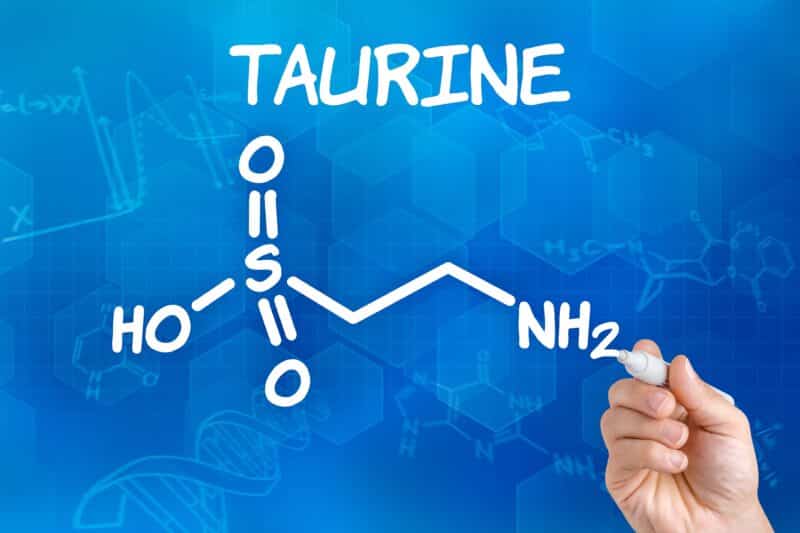
Taurine supplementation has also been proposed as a treatment option against muscle loss in sarcopenia patients. The mitochondrial disfunction that accompanies such a state is a source of Reactive Oxygen Species (ROS), taurine takes on the role of an antioxidant molecule in such circumstances and improves homeostasis. It applies the brakes to catabolism by directly inhibiting the expression of Astrogin-1 and MuRF-1 and downregulating the inflammatory cytokine Tumour Necrosis Factor alpha (TNF) (35, 36). This too would be added at the dosage indicated by the relevant studies.
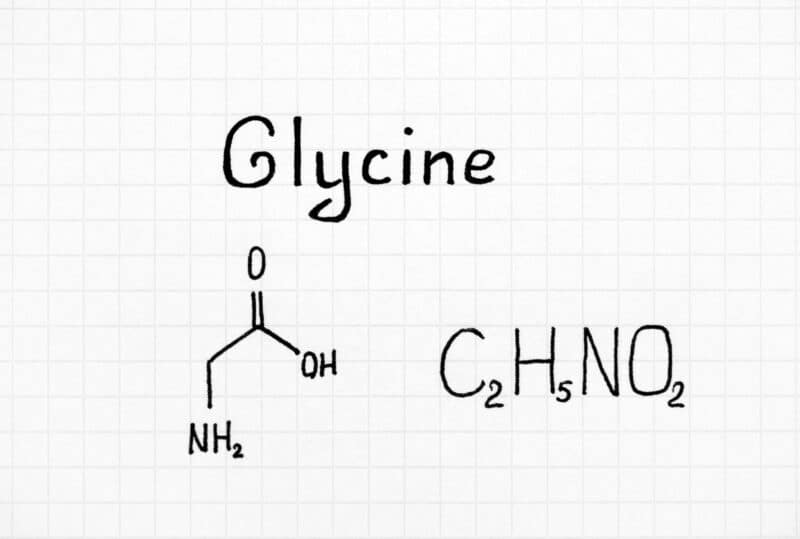
Glycine spiking of protein products has been a practice amongst the less ethical companies in the industry for years now, a dependable cheap way of throwing up a smoke screen when your products are being analysed for protein content. How ironic it is that there is now growing recognition of a need to supplement this amino acid by athletes. It turns out that there’s a sound argument for considering glycine a semi-essential amino acid, -the capacity for glycine biosynthesis doesn’t even satisfy the need for collagen synthesis (37)! The average diet provides somewhere between 1.5-3 grams per day, a further 3 grams comes via synthesis, -this falls significantly short of the amount needed for all metabolic uses (including collagen) by a 70kg human by about 10g a day. When you consider the extent of those metabolic uses and extrapolate them to a hard training athlete, it becomes obvious that you’re probably already in a deficit and you need to consider how this is manifesting itself. Glycine deficiency is known to significantly impact gut health, sleep, anxiety, fatigue, concentration and performance, a dosage of 3g at bedtime has demonstrated improvements in all areas (38). Muscle glycine levels have also been closely linked not only with depression, but also with the degree of success in treating it (39). Some of the most promising research on stress-induced depression is looking at glycine-based pharmaceuticals in targeting what are known as “orphan receptors” (40). Interestingly, beta-lactolin, a glycine containing whey peptide, has recently demonstrated potential as an antidepressant treatment in Japanese trials (41). Whilst we’re reviewing the role of glycine in stress-related matters, we need to underline its part in improving digestion and tackling diet or exercise-induced GI stress. Adequate levels of glycine are essential for healthy digestion, both glycine and taurine are used by the body to increase the solubility of bile salts in the digestion of fats and uptake of fat-soluble vitamins. It’s role in the synthesis of GSH is key to reducing oxidative stress and subsequent inflammation in the GI tract. Glycine supplementation can help protect and repair this area from oxidative damage from acid and/or pepsin from nonsteroidal anti-inflammatory drugs (NSAIDs) and diet induced gastritis and reflux. The glycine-specific transporter in the intestines allows for targeted uptake to respond directly to an oxidative challenge and protect/repair the epithelial cells at risk (42, 43). A 2014 study looked at how glycine supplementation was able to enhance skeletal muscle growth in young, milk-fed pigs, -an excellent model for human metabolism. Looking at the effects on splanchnic tissue, increased small-intestinal villus height was noted, -an indicator of increased growth performance that relates to feed efficiency. Increased intestinal transport of glycine and plasma concentrations of GSH and glycine were observed, as were reductions in plasma ammonia, urea and glutamine, all leading to whole-body growth and protein accretion. The idea of this study was to demonstrate that milk fed young pigs require glycine supplementation for optimal growth, it was considered to have important implications for designing improved milk formulas for human infants, particularly low birth weight and preterm infants (44). Even when added to a milk formula, glycine still managed to further increase GSH levels and protein synthesis, -possibly driven by glycine’s strong insulinotropic influence on the amino acid pool or even mitigation of stress-related catabolism by inhibiting MuRF1, something already demonstrated in a cell line study (45, 46). Whether provided in a protein supplement, collagen, intra-workout or whatever, we believe glycine supplementation needs should be a mainstay in the diet of hard training athletes and several other target populations.
Glycine has popped up on the radar several times over the years, it’s been used in various complexes and dipeptides to improve delivery of something or create some kind of synergistic effect. The objective with a dipeptide has normally been to use what is known as a Large Neutral Amino Acid (LNAA) as a means of facilitating delivery into the target tissues via amino acid transporters (AATs), a group of at least 50 membrane-bound proteins that shuttle amino acids into various tissues around the body. In my experience, those target tissues have usually been the brain, as LNAAs can competitively cross the blood-brain barrier (BBB). Transporters can be divided into two major groups, -neurotransmitter transporters and nutrient amino acid transporters. There are overlaps in these categories, some amino acids can be either depending on the target tissues. A common approach would be the use of a LNAA bonded to an excitatory amino acid (e.g. for an energy drink) or one believed to decrease anxiety (e.g. theanine for a sleep formula). I had previously worked on various novel dipeptides of leucine in the development of RTD formulas for a large energy drink company in the US, some of these proved to be taken up by the small intestine very effectively, having shown proof of concept in previous research, -Glycyl-L-Leucine was one of them (LeuSyn®) (47, 48). As we were looking at further extending the anticatabolic properties of Time 4 Whey Protein Professional, we looked at ways of improving the delivery of the protein-sparing ingredients across the intestinal wall or enhancing the synergy between them. We knew that inflammation and impaired insulin sensitivity could blunt the anabolic response to leucine whilst at rest, glycine could improve this situation, but we wanted to iron this out completely by adding our glycine-leucine dipeptide to the formula, – LeuSyn® (49, 50, 51).
It’s a common marketing ploy of energy/electrolyte drink companies to claim that their product improves rehydration over and above simply drinking water, this being based on the belief that if it tastes good then you’ll drink more. If that is the case, then Time 4 Whey Protein Professional will make you gain more muscle than simply consuming protein, because I have never known a company put so much effort into flavours! Of course, over the last few years, Time 4 Nutrition have gained a reputation in this department, -they’ve certainly not stopped short this time around! In fact, providing the best flavours in the protein supplement category has been the most time-consuming part of this whole project, because the science part just speaks for itself.
What is the Best Whey Protein Blend – Time 4 Whey Protein Professional

The Benchmark
With this project, necessity truly was the mother of invention. Sure, we had already planned to reformulate, but the challenges faced by the industry in recent times forced us to evolve, -to turn a corner. For me, this became a personal mission, supplements have made up around 50% of my daily protein intake ever since life-saving GI surgery nearly two decades ago, -I could not formulate something that I wouldn’t use myself. Our goal was not just to satisfy the needs of athletes, but to provide a product that improved the quality of life for all those people who can benefit from increasing their protein intake; we are proud of the result. I look back at the development timeline of protein supplements over the last few decades and there are a couple of prominent milestones that stand out. First would be the work of Scott Connelly and his introduction of an MRP that used blended proteins and acknowledged the immune-supportive bioactivity of dairy proteins, based on the work in this area by the late Dr Gustavo Bounous (52). Next would be the blended products with which I was associated a decade later, based on the work of Professor Yves Boirie, they acknowledged both bioactivity and the role of digestion rate in protein metabolism. With the release of Time 4 Whey Protein Professional, we have set the new milestone in protein supplementation, not only by refining and updating much of the previously stated technology, but also by further augmenting metabolism by targeting catabolic processes at the nutrigenomic level (TRIM genes, MuRF-1, Astrogin-1). Please enjoy the fruit of our labours.
